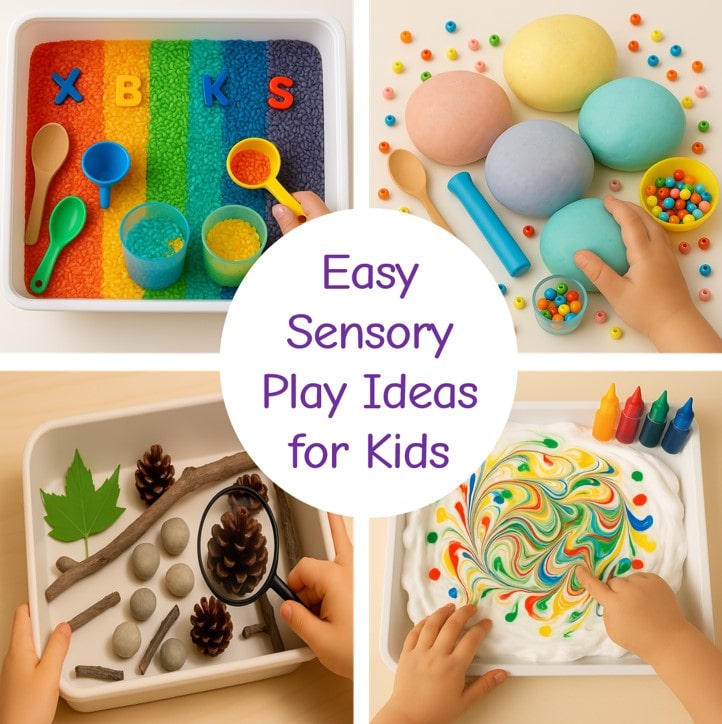Welcome to a new, fun activity. Sensory activities are exciting for kids because they allow them to explore, create, and learn through hands-on experiences. Also, these activities engage the senses like Touch, Sight, Sound, smell, and even movement. Whether it’s squishing Play-Doh, exploring a sensory bin, or listening to different sounds, kids have endless opportunities to discover and enjoy the world around them. So, let them experience the world with easy Sensory activities.
What are these Easy Sensory Activities?
Sensory play is all about using your senses to explore and have fun.
For example, squishing Play-Doh pouring water, and listening to the xylophone are all kinds of sensory play. Additionally, these activities let kids use their imagination, problem-solving ability, and figure out how things work. So, they can mix colors, build shapes, feel the texture, and get the experience of taste.
Sensory play is also very good for brain and body development. Developing muscles and coordination. It can even help them to feel calm when they are worried or upset because it’s fun and relaxing at the same time. Especially, the best part is that you can do sensory play anywhere. At home, in school, or outside, kids can use toys, household items, or even nature to explore. Certainly, it’s a playful way to learn and be creative every day!!
Sensory activities are recognized all over the world for their developmental benefits.
- Early Childhood Education: Countries like the UK, USA, Canada, and Australia include sensory play in preschool and kindergarten curricula.
- Therapeutic use: Sensory activities are used by occupational therapists worldwide for children with autism, ADHD, or sensory processing disorders.
- Research-based evidence: Multiple studies show that sensory play improves brain development, creativity, and learning outcomes.
- Parent and Community Awareness: With online platforms, DIY sensory activities have become popular in parenting communities worldwide.
How kids benefit from Easy Sensory Activities:
- Brain and thinking skills
- Fine Motor Skills
- Emotional Skills
- Social skills
- Language skills
Now let’s go through these activities. We have recommended 10+ Sensory activities with steps. Follow them and let kids explore the world.
10+ Fun and Easy Sensory Activities for Kids
1. Rainbow Rice Bin
The Rainbow Rice Bin sensory activity is fun and colorful. Also, Kids can explore different textures, colors, and even sounds. To make it, simply color white rice with food coloring and vinegar or rubbing alcohol, and let it dry. Then pour it into a basket or a bin. After that, Kids can scoop, pour, mix the colors, or dig for hidden small toys, which makes it exciting and playful.
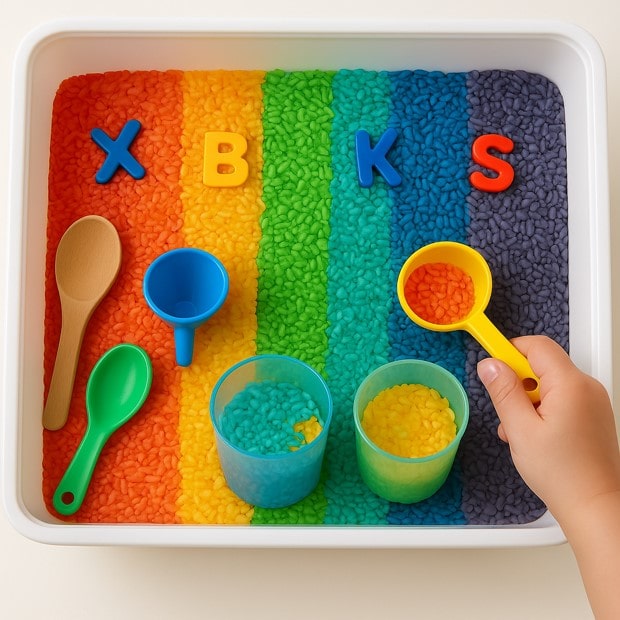
2. Homemade Playdough
Homemade Playdough is a classic and fun sensory activity that keeps your kid busy with squashing, making shapes, and creating whatever they imagine. So, you can easily make it at home using simple ingredients like flour, salt, water, and a little oil, and add food coloring for bright, fun colors. Then, Kids can roll it, cut it, or mold it into shapes, which improves fine and motor skills and hand strength.
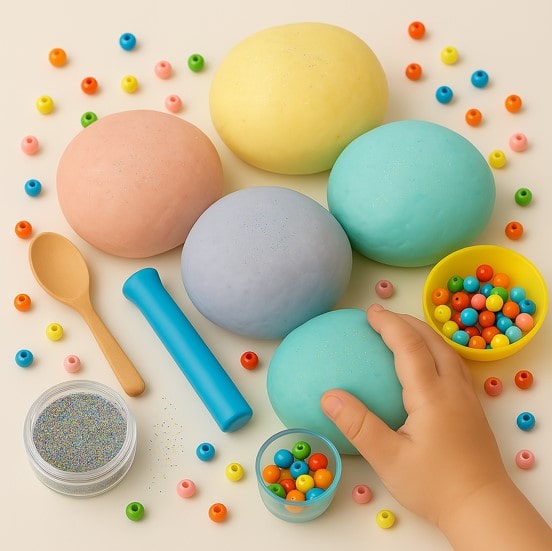
3. Water Beads Fun
Water Beads fun is an exciting sensory activity where kids can explore Soft, Squishy, and colorful beads that grow when soaked in water. Soak the tiny beads in water until they expand, then let children scoop, pour, and squish them in a large container.

4. Texture Walk
A texture walk is a fun sensory activity that lets kids explore different surfaces with their feet. However, you can create a path using materials like cotton, bubble wrap, fabric, grass, or sand. So, As children walk barefoot along the path, they feel different textures, which helps develop their tactile sense and balance skills.
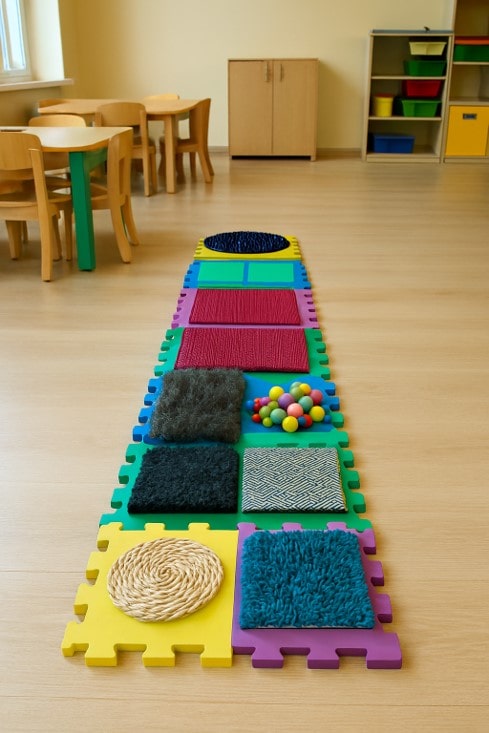
5. Shaving Cream Art
Shaving Cream Art is a messy but super fun sensory activity that lets kids explore colors, textures, and creativity at the same time. To do this, spread a layer of shaving cream on a tray and add a few drops of food coloring. Moreover, Kids can swirl the colors with their fingers, paintbrushes, or sticks to create beautiful patterns and designs.
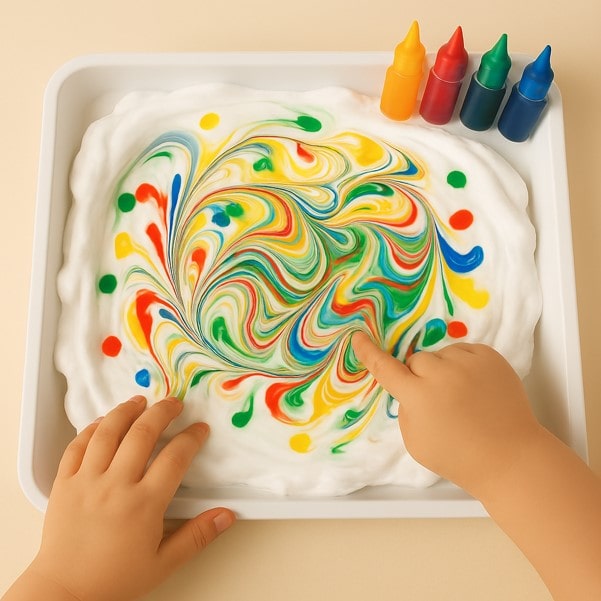
6. Sound Bottles
Sound Bottles are a fun sensory activity that lets kids explore sounds and rhythms while playing. Firstly, To make them, fill small bottles with various materials like rice, beans, beads, or pasta, and buttons. and seal them tightly. Also, sound bottles are simple to make, safe, and engaging, giving kids a hands-on way to discover how different materials create unique sounds.
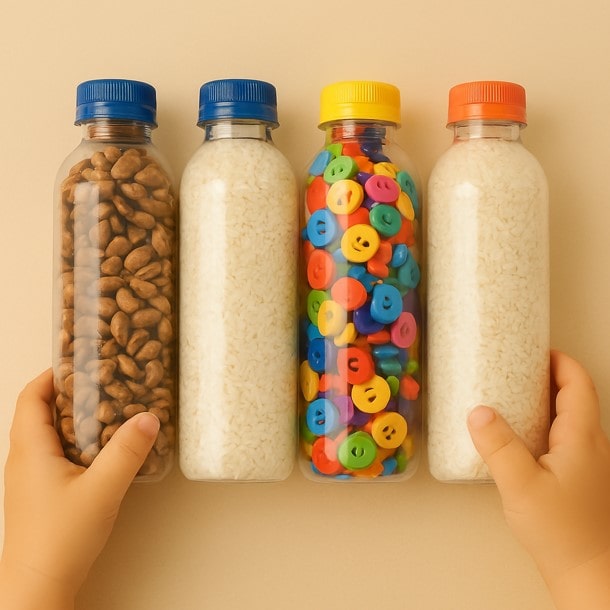
7. Scented Cotton Ball Guessing Game
The Scented Cotton Ball Guessing is a fun and engaging sensory activity that lets kids explore their sense of smell. To play, soak cotton balls in different safe scents like vanilla, citrus, cinnamon, mint, lemon, and place them in small containers or bags. Kids then sniff each cotton ball and guess the scent, making it a fun guessing game.
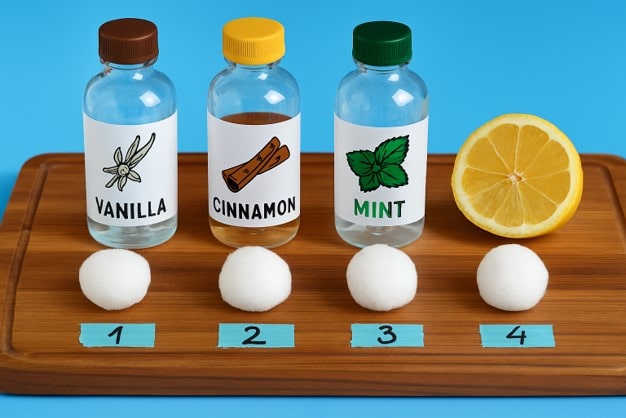
8. Sensory Bag
Sensory Bags are a fun and mess-free way for kids to explore textures and practice fine motor skills. So, Fill a resealable plastic bag with items like hair gel, water beads, small toys, or rice and seal it tightly. After that, Children can squish, press ,and move the items around inside the bag without making a mess.
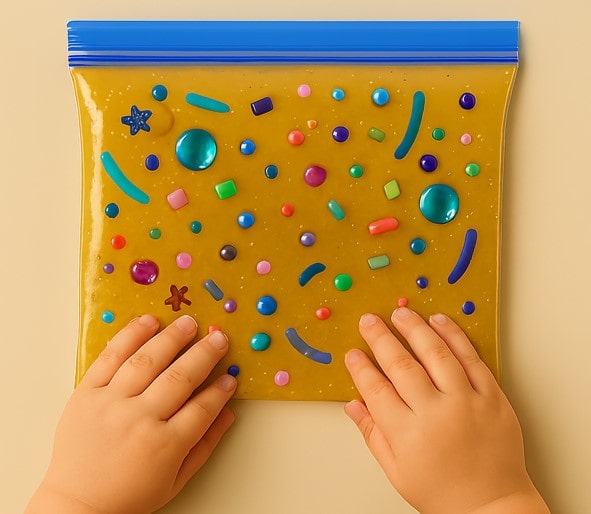
9. Frozen Toy Rescue
Frozen Toy Rescue is an exciting sensory activity that lets kids combine problem-solving with hands-on play. Place small toys in a container, fill it with water to “rescue” the toys from the ice. Furthermore, this activity helps develop fine motor skills, patience, and critical thinking.

10. Nature Sensory Bin
A Nature Sensory Bin is a fun and hands-on activity that allows kids to explore the sights, smells, and textures of the outdoors. You can fill a large container with natural materials like leaves, pinecones, soil, sticks, flowers or small rocks. Then, Children can dig, sort, and examine the items, which helps develop fine motor skills, observation, and curiosity.
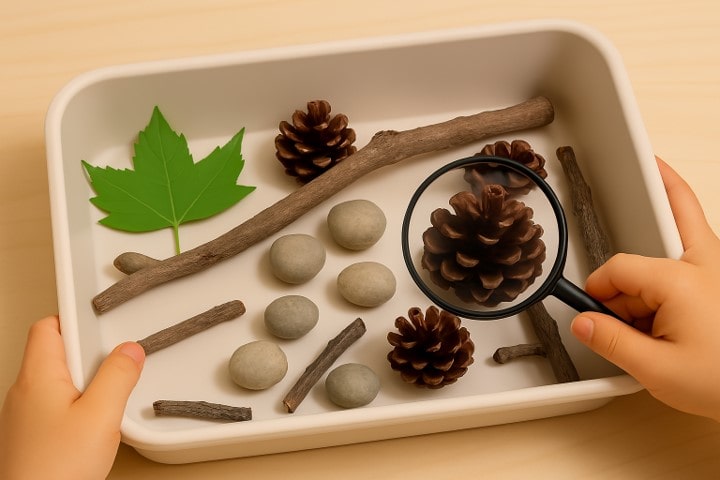
11. Taste Test Activity
The Taste Test Activity is a fun sensory experience that allows kids to explore different flavors and learn about food. You can offer small samples of sweet, sour, salty, or bland foods and have children taste and describe them, guessing what each one is. This activity helps develop their sense of taste, observation skills.
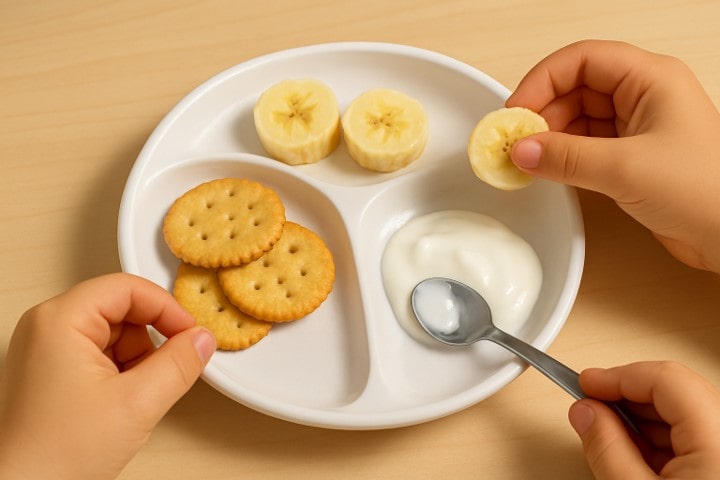
Tips for Easy Sensory Activities at Home or School
Since this is a big deal with equipment and nature, we need to give more attention to kids.
- Keep it safe
- Use Everyday Items- do not use expensive toys.
- Encourage Imagination-Let them explore freely.
- Make cleanup easy
- Talk about the experience
- Engage the Senses Together
- Keep it short and Fun
Easy Sensory Activities for Kids: Final Thoughts
Sensory Activities are a wonderful way to learn and explore, and have fun at the same time. Whether it’s squishing playdough, digging in a rainbow rice bin, or listening to sound bottles, each activity helps children develop important skills, like creativity, problem-solving, and coordination. The best part is that sensory activities can be done anywhere, at home, in school, or outside.
Let kids explore, discover, and enjoy the world through their senses, because learning is always more fun when it’s hands-on and playful!
